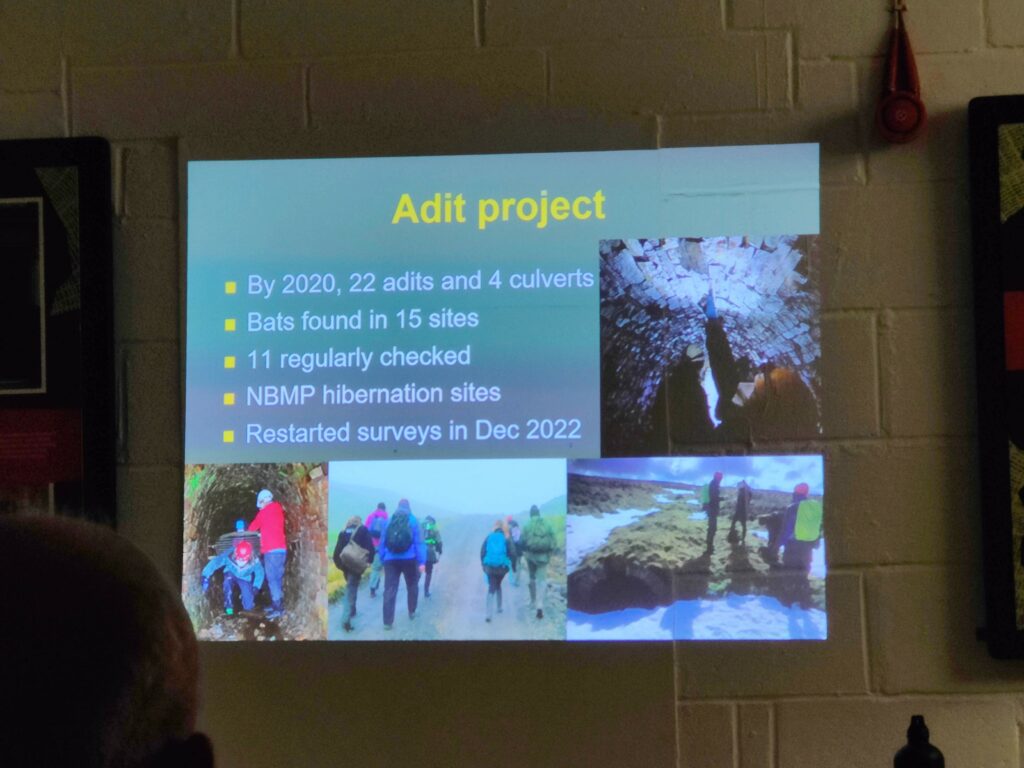On the 12th April 2023 (a slightly rearranged date) Tina Wiffen gave a talk about all of the adit surveys that she has been doing over the years. She has been organising surveys since 2014, and in that time has trained and inspired a large number of volunteers too! The surveys are aligned with the National Bat Monitoring Programme.
Many of the sites that Tina and her team search for hibernating bats are quite remote, located up in areas around Nenthead and Alston; close to the Cumbrian/ Northumberland / Durham county boundaries. As a result site visits have also included members of neighbouring bat groups too.
So for this talk, Tina presented a summary of nine years worth of data, trying to determine if there was any specific environmental conditions which attract certain species of bats to addits, and within the adits, to specific areas, based on temperature, humidity or other factors.

As you can see from the summary slide, Tina has been checking a wide range of sites, not just adits but also culverts for hibernating bats. For all of the data that she has been collecting, including humidity, temperature, species location etc. over time, there does not seem to be any clear patterns on where particular species of bat are likely to be found.
Most bats occur within the first 30 metres of the adit, but sometimes they can be found beyond 50 metres. If it is stability in temperature that bats are looking for, why are so many bats (relative numbers) found within 5 metres of the adit entrance where temperatures will fluctuate? But what can probably be concluded is that as spring starts to arrive, the bats move towards the entrance of the adit, and will forage out at night, and return, but not far in, to roost during the day.

During the whole talk, the audience was quite animated asking questions, and telling anecdotes: the hard to identify brown long eared bats (they fold their ears back then they hibernate and only the tragus can be seen). The tall surveyor who gets to find more bats than anyone else. The guide book that the bats don’t read, so they are sometimes found 30cm from the floor just hibernating on a narrow ledge with a slight depression.
It was also interesting to learn about the spiders and moths which Tina and her team have been finding in the adits too. One of these finds included the Tissue Moth Triphosa dubiata which has a southern distribution and is considered rare up north! A beautiful moth, one I will search for next time I am out.
All in all, this was a very interesting talk, Tina has so much data, and enthusiasm. If anyone is a whizz at statistics, please can you contact Tina, there may yet be more stories for her data to tell….. 🙂
Share this post!
